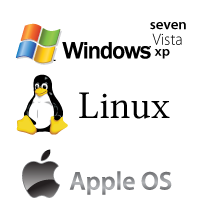 1960: USS Enterprise, the first nuclear-powered aircraft carrier, is launched in Newport News, Virginia. CVN-65, nicknamed Big E, was the
1960: USS Enterprise, the first nuclear-powered aircraft carrier, is launched in Newport News, Virginia. CVN-65, nicknamed Big E, was the
With nuclear power to propel it, the Enterprise does not need to carry its own fuel oil and has more room for aircraft and weapons. It routinely carries 70 to 90 planes. The ship measures in at 1,120 feet (about 100 feet longer than the USS Saratoga), with a 250-foot-wide flight deck and 93,970 tons displacement. It relies on a crew of 5,700.
All this came with a price: around $451.3 million (equivalent to $3.3 billion in today’s money), according to Jane’s American Fighting Ships of the 20th Century. The Enterprise came in well over budget and ended up being the only ship in its class. Five other planned ships were not constructed.
As for packing heat, the Enterprise is not lacking. These days, it stacks two NATO Sea Sparrow launchers (there were three, but one was removed,) two 20-mm Phalanx CIWS, or close-in weapon system, mounts and two RAM, or rolling-airframe missile, launchers. Aside from those, the Enterprise has a phased-array radar system, instead of the classic rotating dishes. This makes tracking multiple targets easier.
In 1963, just to prove that it could, the Enterprise and two nuclear-powered cruisers made a nonstop trip around the world. They didn’t stop in Cuba, where the Enterprise had been deployed one year earlier in its first international crisis. The Enterprise, along with a flotilla of other ships participated in the blockade of Cuba, making sure that no nuclear weapons were delivered to Cuba from the Soviet Union.
It wasn’t until November 1965 that the Enterprise became the first nuclear carrier to head into battle. Arriving at Vietnam, the Enterprise launched 125 sorties on the first day, unleashing 167 tons of bombs and rockets. Most of this ordinance was aimed at Viet Cong supply lines.
After heading back to dry dock from 1969 to 1970, the Enterprise returned to Vietnam with new nuclear reactors in place, able to power the ship for 10 years … after the end of the war.
The Enterprise was then retrofitted for the latest and greatest in fighter planes, the Grumman F-14 Tomcat, replacing the F-4 Phantom II. The Tomcat would be flying off the deck until it was retired in 2006 and replaced with the F/A-18E/F Super Hornet. If it helps you sleep better at night, those retired Tomcats are being melted down, so their parts don’t make their way to Iran, like some earlier fighters.
When word came on Sept. 11, 2001, of the terrorist attacks on the World Trade Center and the Pentagon, the Enterprise was returning from deployment in the Persian Gulf. The ship immediately turned around and zipped back at flank speed to the waters off Southwest Asia and the Persian Gulf. The Enterprise outran its escorts, proving that not only was it fast for a carrier, but able to self-sustain long enough not to even consider returning to refuel and recharge.
Over the next couple of months, more than 700 missions and 800,000 pounds of ordnance were launched off the Enterprise during Operation Enduring Freedom, mostly aimed at Taliban operations in Afghanistan.
The Enterprise then headed back to dry dock for a scheduled one-year pit stop, though not before being part of the new media age, hosting not only ABC’s Good Morning America, but also concerts by Garth Brooks and Jewel. Rumor has it that Jewel lived in a station wagon parked on the flight deck until it was airlifted off in the middle of the night.
The Enterprise is the eighth ship to bear the name Enterprise — not counting the ones in the fictional Star Trek universe. (Sorry, fanboys. Those are fictional.) The real Enterprise became the oldest active ship in the U.S Navy when USS Kitty Hawk was decommissioned May 12, 2009.
The Enterprise is currently slated to be decommissioned in 2013, according to the National Defense Authorization Act for fiscal year 2010. This comes on the heels of a $662 million refurbishing in April 2010 — 46 percent over budget. Only two more 6-month deployments are planned for the Enterprise.
And, in case you have any doubt that the Navy is sailing into the future: The Enterprise has its own Facebook page.
Source: Various
Photo: U.S. Navy
See Also:
- Jan. 18, 1911: Clear the Deck
- June 4, 1942: Naval Warfare Evolves as the Tide Turns
- Jan. 21, 1954: Up Periscope
- How to: Build a Next-Gen Aircraft Carrier
- Jan. 23, 1960: Journey to the Deepest Place on Earth
- April 1, 1960: First Weather Satellite Launched
- May 9, 1960: Easy Birth Control Arrives, but There's a Catch
- May 10, 1960: USS Triton Completes First Submerged Circumnavigation
- May 16, 1960: Researcher Shines a Laser Light
- July 12, 1960: Etch a Sketch? Let Us Draw You a Picture
- Aug. 16, 1960: Geronimo-o-o-o-o-o-o!!!
- Aug. 20, 1960: Back From Space, With Tails Wagging
- Sept. 26, 1960: JFK, Nixon Open the Era of TV Debates
- Oct. 24, 1960: Russian Rocket Explodes, Killing Top Engineers, Technicians
- Sept. 24, 1947: MJ-12 — We Are Not Alone … Or Are We?
- Sept. 24, 1993: Beautiful 'Myst' Ushers In Era of CD-ROM Gaming
- Sept. 24, 1979: First Online Service for Consumers Debuts
Authors: Curtis Silver

















